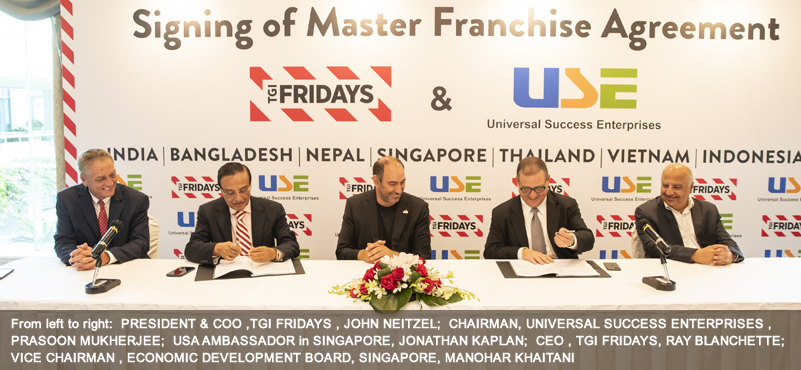It was an unusual interview, more a free-wheeling chat over various facets of travel and tourism in India and the United States. The discussion ranged from the US government’s plan of putting in place restrictive visa policies, impact of tourism on the economy of New York, and the future of Indian outbound. We also talked to him on the Chinese outbound and how it was different from the Indian outbound. We bring you excerpts of the discussion.

CEO, NYC & COMPANY
How has the Indian market been for you?
We have had 70% growth since 2010 in numbers. Last year was 9% growth alone, in terms of marketplace. So, it has been growing at 9-11% a year since 2010. So, it has been very positive.
How does that fare with other markets around the world?
It is the second highest growth rate next to China. China has had sort of an explosive growth because of the co-operation between the US and Chinese government and the approval of visa. We only got approved travel status for China eight years ago. It is called approved destination status. United States did not have that.
And what about numbers from China compared to India?
China numbers are larger. It is almost three times larger, somewhere around nine hundred thousand. China, in some years, was growing at 20% y-o-y. Some years even more. It sort of starts and stops in terms of growth, but it has been very steady on an aggressive climb. It slowed a little bit in the last few years but it is still growing between 12-14%.
Do you see India overtaking China in some point in time?
I think it is possible. I think China is on an interesting trajectory at this moment because they have just come out of the gate very fast, 0 to 60 very quickly as they say. I think the potential is there, certainly.
It is just about building the infrastructure, the product and sort of catching up with the marketplace.
Interesting that you mentioned that only 15% of Indian outbound to New York is leisure and that is at a time when New York is one of the most preferred destination, and continues to be so. So, the opportunity is immense.
I think so too. We are very bullish on the Indian relationship. 15% is only leisure. We know a lot of people, like us, who travel for business and extend, add-on and bring family.
And what about purely global incoming in the leisure segment?
Our global incoming is much higher. That is unique to India that the purely leisure segment is only 15%.
And why is so? What would you attribute this do?
I do not know. That is pure leisure. People choosing to come on vacation. I think there is so much business travel and family travel in the marketplace. Indians travels often time for family reasons.
So, family is not leisure?
No, family is not leisure. So, the way the United States government categorises it is that it is a separate category. That is about 40% of the market. But if you are going purely on holiday, not seeing family and not having business meetings, that is only 15%.
How much is the China component in terms of family? Would there be less Chinese living New York than Indians?
That is a good question. I do not know. I think I will have to look that up.
China is an unusual market in every way. It really is. Before 2007, the only way you could come to the US from China was on a business visa, or to visit family, or to study, and one had to get an approved visa status for the same. It was very restrictive. After 2007, when US got an approved destination status, one could travel for leisure and holidaying but even then, you could only travel in a group. One could take one’s family and go on vacation. That was not allowed. Now the market is opening-up and individual travel is allowed. That is the biggest opportunity, allowing for longer stays and higher spend. There is a lot of the younger demographic that comes in now.
So, the hotel overnights must have increased by leaps and bounds?
Indians, notably, have a higher percentage of consumption when it comes to hotel rooms. The Indian traveller has a higher percentage of consumption of hotel rooms. There is a lot of interesting stats. As per the latest stats released by the US government, 36% of Indian inbound has been for business and 31% for visiting friends and relatives. Only 15% of the Indian inbound was for leisure and the rest was for meeting, conventions and education etc. The Indian market in terms of total expenditure in the US in 2015 is almost 12 billion dollars – which is just behind Brazil. It is also above Germany, Australia and South Korea which are by virtue larger travel markets but are being outspent by Indians. As a percentage, the Indian market tends to spend above its weight in terms of impact. It is a fascinating market.
The present US administration is taking stock of bilateral ties with many countries, some of which are key drivers of footfalls into the United States. There must be some concern about tourism taking a hit?
Absolutely. There are concerns all across the board. That is why we as New York city and NYC & Company are the first organisation to oppose the ban. We spoke out. San Francisco has already spoken out against it. But we have been very adamant in our opposition. We are fortunate that the city we come from that the mayor and the governor are, both, in agreement. So, we are all voice opposition against the ban. The situation changes every day. It is such a frustrating environment to operate in.
Do you have a ‘plan B’ to keep your numbers growing?
Yes, but not what you would do here in India. You want to make sure that you shore up your domestic markets. If there is any impediment to the international inbound, you would strengthen your domestic to try and counterbalance any loss in economic activity and employment. So, we have begun doing a little more messaging domestically just as an insurance policy, if something goes wrong. I mean we have not seen any major cancellations, as yet. These are still early days, and this is the slow period of the year. We did see some groups cancel from Mexico right after election.
In your overall basket, how does domestic vs. international stack up?
It is interesting. Last year, we had around 60 million visitors. Of that, there were roughly 48 million domestic visitors, and a little more than 13 million international. While it is only 20% of the total volume, it accounts for half of all the spending, and half of all the room nights. So, it is huge.
The direct spending on tourism in the New York City, last year, was 41 billion dollars.




































